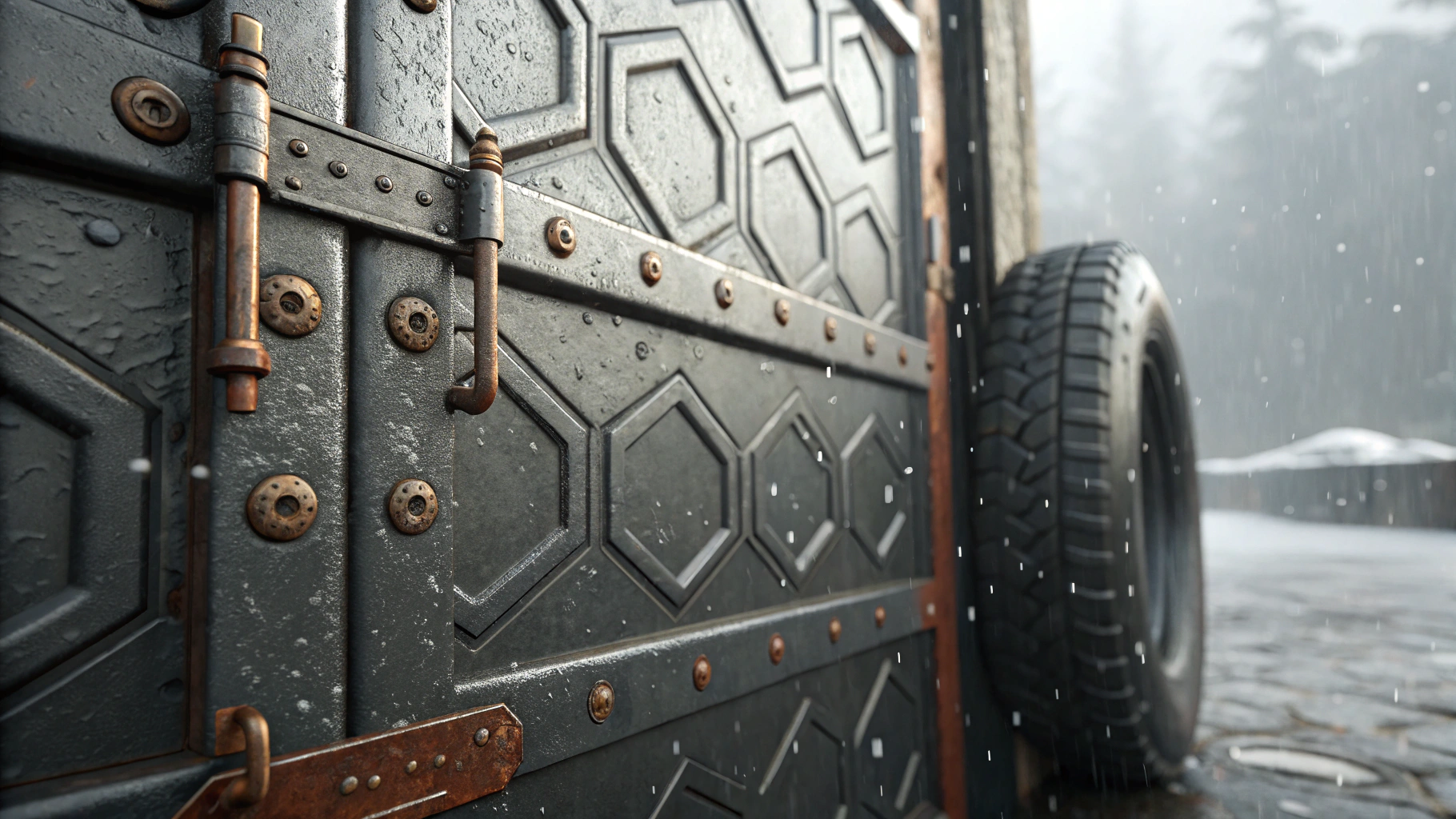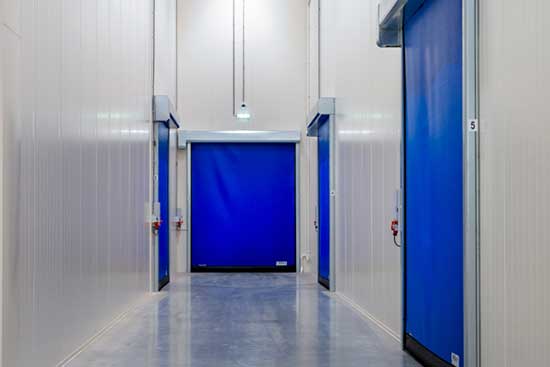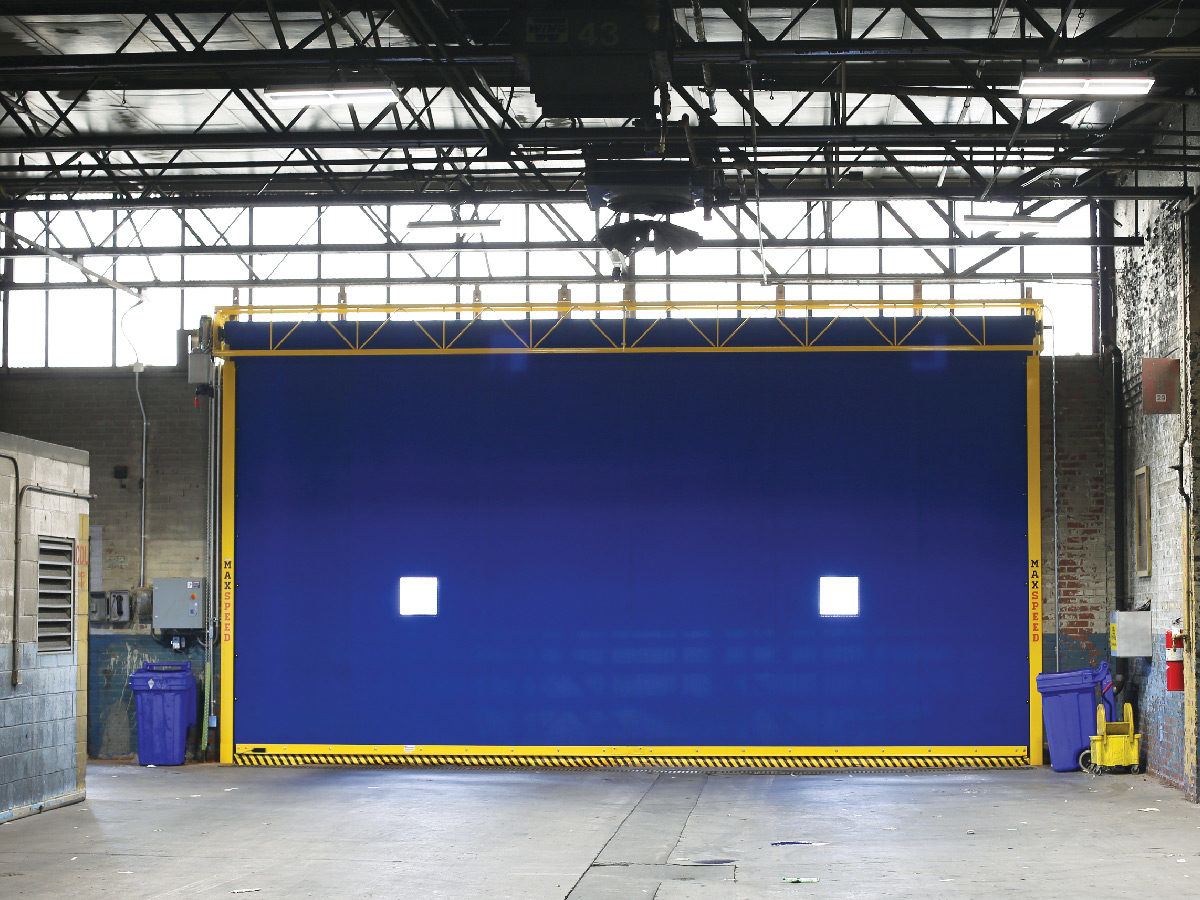Discover the Best High-Speed Rubber Doors for Industrial and Commercial Excellence
In busy warehouses and manufacturing plants, efficiency and durability are key requirements. High-speed rubber doors have become game-changers for facilities that need reliable equipment that won't slow them down. Engineered to withstand relentless use while maintaining energy efficiency, these doors are reshaping industries from automotive manufacturing to cold storage logistics. Let’s explore the top models, materials, and what sets the best doors apart.

Top-Rated High-Speed Rubber Doors for Industrial Excellence
When evaluating high-speed rubber doors, four models consistently rise above the rest:
Northern Dock Systems Heavy-Duty Doors
Built to endure over a million cycles in their lifespan, these doors combine springless safety with rapid reset capabilities after impacts. Their reinforced rubber curtain also thrives in extreme temperatures and high-wind conditions, making them ideal for distribution centers battling harsh weather1.Rytec PowerTec™ Series
Featuring corrosion-resistant steel frames and abrasion-proof SBR rubber (a synthetic blend ideal for chemical exposure), this series offers tailored solutions. The PowerTec MR model, for instance, excels in food processing plants where hygiene and frequent washdowns demand durable materials2.Wayne Dalton 885 ADV-Xtreme
With five layers of NBR rubber, a material known for oil resistance, this door withstands 27 pounds per square foot of wind pressure. Its breakaway detection system instantly stops operations during collisions, which is a lifesaver in mining sites where forklifts operate nonstop1.
Chio MaxSpeed® Springless Doors
Operating at 48 inches per second, Chio’s soft-edge design prevents vehicle damage during accidental impacts. A lifetime warranty on its quarter-inch rubber curtain makes it a favorite in automotive plants prioritizing throughput and collision resilience.
Insulated High-Speed Rubber Doors: Energy Efficiency Unlocked
For climate-controlled environments, insulated high-speed rubber doors are critical. They slash annual HVAC costs by 10% compared to non-insulated models by limiting air leakage to 1.3 cubic feet per minute4. Their thermal efficiency rating (U-factor of 1.2) minimizes heat transfer, which is crucial for pharmaceutical labs needing precise temperature control.

Non-insulated options, meanwhile, shine in settings like loading docks where durability trumps climate needs. Their thicker rubber layers endure heavy equipment collisions without the added insulation cost5.
Industrial vs. Commercial: Choosing the Right Fit
Choosing between industrial and commercial high-speed rubber doors depends on three factors:
- Durability
Industrial doors like Wayne Dalton’s 885 use reinforced polyester cores to survive mining site impacts, while commercial models opt for lighter materials suited to retail warehouse traffic. - Safety
Springless designs reduce injury risks in industrial settings, whereas commercial doors often rely on basic motion sensors6. - Cost
While industrial doors require higher upfront investment, their million-cycle lifespan often proves cheaper long-term. One FedEx facility slashed annual maintenance costs from $50,000 to $0 by upgrading to industrial-grade rubber doors7.
Five-Step Selection Guide
Assess Traffic
Facilities with 100+ daily cycles need springless models like Chio MaxSpeed® to minimize downtime from maintenance.Measure Openings
For spaces exceeding 40 feet wide, Wayne Dalton’s ADV-Xtreme offers custom sizing8.Prioritize Materials
NBR rubber resists oil spills in automotive plants, while SBR handles freezer-to-oven temperature swings in food processing9.Verify Compliance
Ensure doors meet ASTM wind load standards (e.g., 27 psf rating) and IBC egress requirements for emergency exits10.Plan for Tech
IoT-enabled doors predict maintenance needs via embedded sensors. Amazon’s warehouses use this tech to reduce energy loss by 15% within six months11.
Maintenance Made Simple
Proactive care extends door lifespans to 15+ years:
Monthly: Lubricate hinges with silicone spray to prevent wear12.
Quarterly: Clean rubber curtains using mild detergent to remove grit that causes premature cracking13.
Annual: Test infrared sensors and replace worn seals to maintain safety compliance14.

One mining company cut repair calls by 70% by adopting this routine7.
The Future Is Fast and Connected
As IoT and AI transform the industry, high-speed rubber doors are evolving:
Self-Diagnostic Systems detect track misalignments before failures occur.
Sustainable Materials like recyclable rubber curtains support corporate net-zero goals.
Market Growth, projected at 3.4% annually, reflects soaring demand in e-commerce and manufacturing16.


Final Insight
Choosing a high-speed rubber door is all about making your whole operation run smoother. No matter if you’re shielding a freezer from heat infiltration or streamlining package sorting in a warehouse, you want a door that's fast, tough, and smart enough to handle whatever you throw at it. As one plant manager told us after upgrading:
“It’s like swapping a flip phone for a smartphone, you don’t realize the inefficiencies until they’re gone.”
